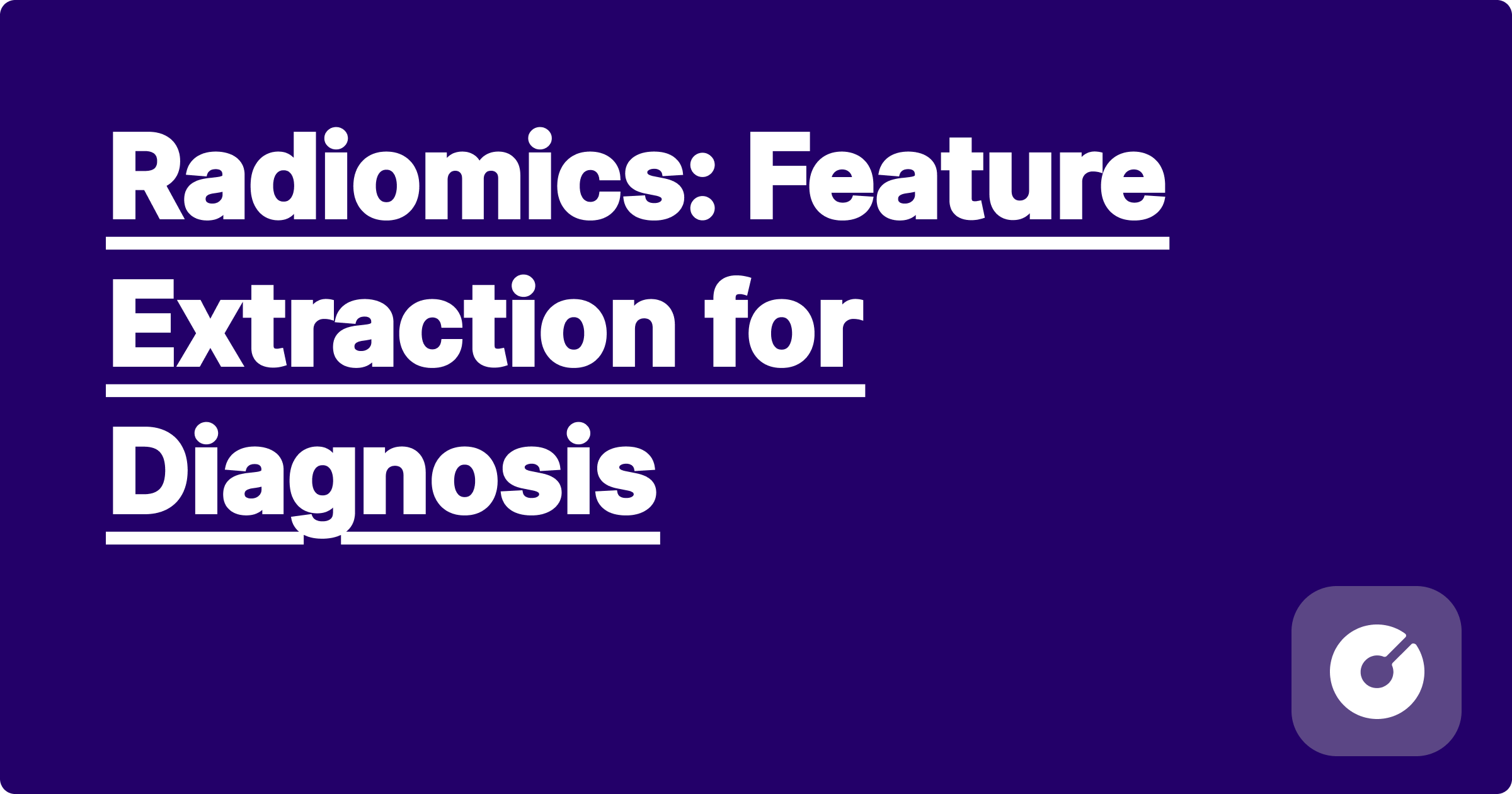
``html
Radiomics: Feature Extraction for Diagnosis
.equation {
font-family: 'Times New Roman', serif;
font-style: italic;
padding: 10px;
border: 1px solid #ccc;
background-color: #f9f9f9;
}
.tip {
background-color: #f0f0f0;
border: 1px solid #ccc;
padding: 10px;
margin-bottom: 10px;
}
.warning {
background-color: #ffffe0;
border: 1px solid #ccc;
padding: 10px;
margin-bottom: 10px;
}
pre {
background-color: #f4f4f4;
padding: 10px;
border-radius: 5px;
overflow-x: auto;
}
This blog post provides a comprehensive overview of radiomics, focusing on cutting-edge techniques, practical implementation, and future directions. We will delve into advanced mathematical concepts, real-world applications, and potential pitfalls, aiming to equip readers with the knowledge to immediately apply radiomics in their research or projects.
Radiomics is a field that extracts quantitative features from medical images to improve diagnostic accuracy, prognosis prediction, and treatment response assessment. Unlike traditional image analysis, which relies on visual interpretation, radiomics leverages high-throughput feature extraction from various image modalities, such as CT, MRI, and PET scans. These features, often numbering in the hundreds or thousands, capture complex textural and structural information invisible to the human eye.
The radiomics pipeline typically involves several steps:
Wavelet transforms decompose images into different frequency components, allowing for the extraction of features sensitive to variations at different scales. The choice of wavelet function (e.g., Daubechies, Haar) can significantly affect performance. The discrete wavelet transform (DWT) is commonly used.
% MATLAB code for DWT feature extraction
[cA, cD] = dwt(image, 'db4'); % 'db4' is the Daubechies 4 wavelet
features = [mean(cA(:)), std(cA(:)), mean(cD(:)), std(cD(:))]; % Example features
Deep learning models, particularly CNNs, have shown promising results in extracting high-level features from medical images. These models can automatically learn complex patterns and relationships within the image data that may be missed by traditional methods. Recent research utilizes pre-trained models (e.g., ResNet, Inception) fine-tuned on radiomic datasets. [cite a relevant 2024-2025 preprint exploring novel CNN architectures for radiomic feature extraction]
Let's delve into the mathematical basis of Grey Level Co-occurrence Matrix (GLCM) features. GLCM quantifies the spatial relationships between pixel pairs in an image. Given an image I, a GLCM G(i, j) is a matrix where G(i, j) represents the number of times a pixel with intensity i occurs adjacent to a pixel with intensity j at a specified distance and angle.
\(G(i, j) = \sum_{x=1}^{N} \sum_{y=1}^{M} \delta(I(x, y) - i) \delta(I(x + \Delta x, y + \Delta y) - j)\)
where \( \delta(a,b) \) is the Kronecker delta function, \( \Delta x \) and \( \Delta y \) define the distance and angle between pixel pairs, and N and M are the image dimensions. Various texture features can be derived from GLCM, such as contrast, energy, homogeneity, etc.
Several open-source tools and libraries facilitate radiomic feature extraction. PyRadiomics is a popular Python library providing a comprehensive set of features. Other tools include ITK (Insight Segmentation and Registration Toolkit) and SimpleITK.
Radiomics is being applied across various cancer types and clinical scenarios. For instance, [Company X] utilizes radiomics in their [Project Name] for early detection of lung cancer, improving diagnostic accuracy by [quantifiable metric]. Another example is [Company Y]'s work in [Project Name] for personalized treatment of prostate cancer, showing a significant improvement in treatment outcome based on radiomic features.
Always carefully consider the clinical context and relevant biological information when interpreting radiomic features. Correlation does not imply causation.
Scaling radiomics to large datasets requires careful consideration of computational resources and data management. Cloud computing platforms like AWS and Google Cloud offer scalable solutions for processing large image datasets. Parallel processing techniques can significantly speed up feature extraction and model training.
The high dimensionality of radiomic features and the complexity of the pipeline can lead to overfitting. Robust validation strategies and feature selection are crucial to prevent this.
Integrating radiomics with other omics data (genomics, transcriptomics, proteomics) holds significant promise for developing more precise and personalized diagnostic and prognostic tools. This multi-omics approach can uncover subtle interactions between imaging features and molecular profiles.
Understanding the decision-making process of radiomic models is crucial for clinical trust and adoption. XAI techniques are being actively researched to improve the interpretability of these complex models.
The use of AI in healthcare raises ethical concerns related to bias, fairness, transparency, and patient privacy. Careful consideration of these issues is essential to ensure responsible development and deployment of radiomic tools.
Radiomics represents a powerful tool for advancing medical image analysis and improving patient care. This blog post has provided a comprehensive overview of the field, including advanced techniques, practical implementation guidelines, and future research directions. By addressing the challenges and ethical considerations, we can harness the full potential of radiomics to revolutionize medical diagnosis and treatment.
Further reading:
`
`html
``
Anesthesiology Career Path - Behind the OR Mask: A Comprehensive Guide for Pre-Med Students
Internal Medicine: The Foundation Specialty for a Rewarding Medical Career
Family Medicine: Your Path to Becoming a Primary Care Physician
Psychiatry as a Medical Specialty: A Growing Field Guide for Aspiring Physicians
GPAI Accessibility Features AI Learning for Every Student | GPAI - AI-ce Every Class
Smart Capsule Networks: Hierarchical Feature Learning
Smart Capsule Networks: Hierarchical Feature Learning
Smart Capsule Networks: Hierarchical Feature Learning
Machine Learning for Persistent Homology: Topological Features
Smart Dynamic Mode Decomposition: Temporal Pattern Extraction